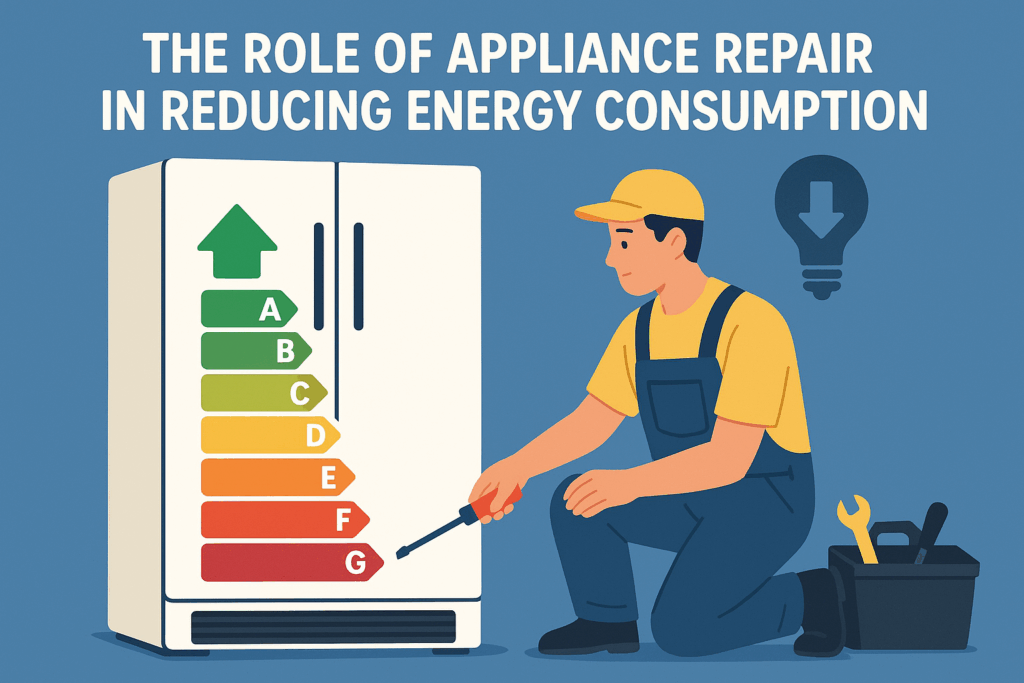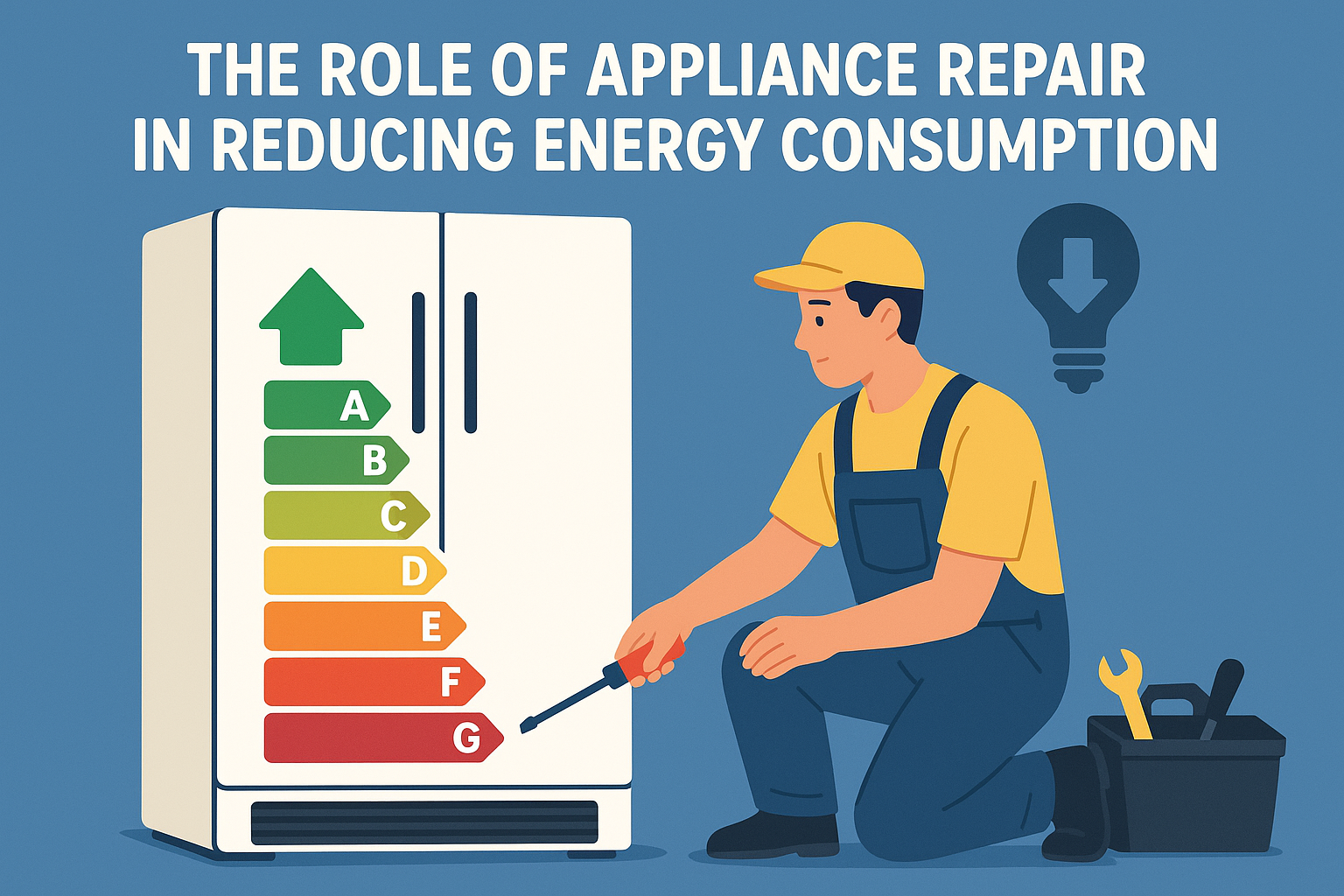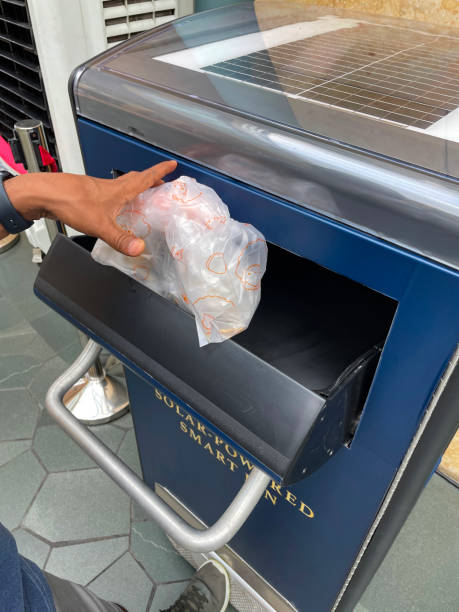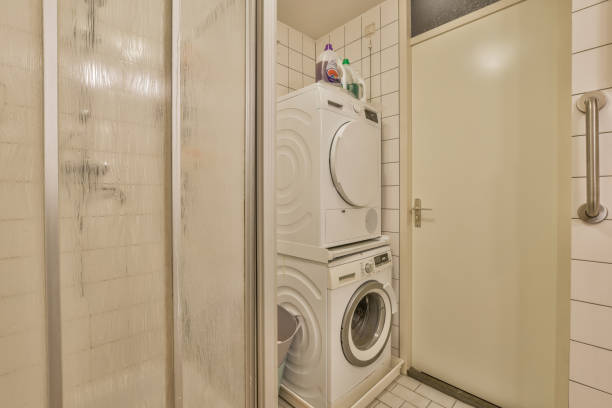In today’s world, energy efficiency is more than just a buzzword—it’s a necessity. With rising energy costs, environmental concerns, and the push for sustainable living, homeowners are increasingly looking for ways to reduce their energy consumption. While upgrading to energy-efficient appliances is often the go-to solution, there’s another powerful strategy that’s often overlooked: appliance repair. At Tech Angels, we believe that maintaining and repairing your existing appliances can play a significant role in reducing energy consumption, saving you money, and contributing to a greener planet. In this 2500-word article, we’ll explore how appliance repair impacts energy efficiency, the specific appliances that benefit most from timely repairs, and practical steps you can take to ensure your appliances are running at peak efficiency.
The Connection Between Appliance Repair and Energy Efficiency
Appliances account for a significant portion of household energy use. According to Natural Resources Canada, household appliances and lighting consume about 15–20% of a typical Canadian home’s energy. When appliances are in good working condition, they operate efficiently, using only the energy necessary to perform their tasks. However, when components wear out or malfunctions occur, appliances often draw more power to compensate, leading to wasted energy and higher utility bills.
For example, a refrigerator with a faulty door seal may run its compressor longer to maintain the desired temperature, while a dishwasher with a clogged pump might need extra cycles to clean dishes properly. These inefficiencies not only increase energy consumption but also put additional strain on the appliance, shortening its lifespan. By addressing these issues through timely repairs, you can restore your appliances to their optimal performance, reducing energy waste and extending their usability.
Environmental and Economic Benefits of Repairing Appliances
Reducing Energy Waste
When appliances operate inefficiently, they consume more electricity or gas than necessary. For instance, a dryer with a clogged vent may take longer to dry clothes, using more energy per load. Repairing the vent can restore the dryer’s efficiency, reducing energy consumption by up to 30%, according to studies by the Canadian Energy Efficiency Alliance. Over time, these small savings add up, lowering your household’s overall energy footprint.
Decreasing Carbon Emissions
Energy production, particularly from non-renewable sources like coal and natural gas, generates greenhouse gas emissions. In Canada, where a significant portion of electricity still comes from fossil fuels in some provinces, reducing energy consumption directly translates to lower carbon emissions. By repairing appliances instead of replacing them, you’re not only saving energy but also contributing to a reduction in your carbon footprint.
Saving Money on Utility Bills
Energy inefficiency hits your wallet hard. A malfunctioning appliance can increase your monthly energy bills by 10–20%, depending on the severity of the issue. For example, a refrigerator that’s struggling to stay cool might add $10–$20 to your monthly electricity bill. Repairing the issue—whether it’s replacing a seal, cleaning coils, or fixing a thermostat—can bring those costs back down, offering immediate financial relief.
Extending Appliance Lifespan
Replacing an appliance is often more expensive than repairing it, and manufacturing new appliances requires significant energy and resources. By repairing your appliances, you delay the need for a replacement, reducing the environmental impact associated with production, transportation, and disposal. For instance, producing a new refrigerator can generate upwards of 500 kg of CO2 equivalent, according to lifecycle analyses. Keeping your current fridge running efficiently for a few more years can make a big difference.
Key Appliances and Their Energy-Saving Repair Opportunities
Let’s dive into some of the most common household appliances, how their inefficiencies impact energy consumption, and the repairs that can help.
Refrigerators
Refrigerators are one of the biggest energy consumers in the home, running 24/7 to keep food fresh. A typical fridge uses about 400–600 kWh per year, accounting for 7–10% of a household’s energy use.
- Common Issues: Dirty condenser coils, worn-out door seals, and malfunctioning thermostats are frequent culprits of energy waste. Dirty coils force the compressor to work harder, while a leaky seal lets cold air escape, causing the fridge to overcompensate.
- Repairs for Efficiency:
- Clean the condenser coils every 6 months using a vacuum or brush. This can improve efficiency by up to 25%.
- Replace damaged door seals to prevent air leaks. A simple dollar bill test—close the door on a bill and pull; if it slides out easily, the seal needs replacing.
- Calibrate or replace the thermostat if the fridge is running too cold or too warm.
- Energy Savings: A well-maintained refrigerator can save 50–100 kWh per year, translating to $7–$14 in annual savings at average Canadian electricity rates (around 14 cents/kWh).
For more fridge maintenance tips, see our guide on How to Maintain Your Refrigerator for Efficiency.
Dishwashers
Dishwashers use both electricity and water, and inefficiencies in either can lead to energy waste. A typical dishwasher uses about 300 kWh annually, plus the energy required to heat water.
- Common Issues: Clogged spray arms, faulty pumps, and broken heating elements can cause a dishwasher to run longer cycles or require multiple washes to get dishes clean.
- Repairs for Efficiency:
- Clear blockages in the spray arms and filters to ensure proper water flow.
- Repair or replace the circulation pump if water isn’t being sprayed effectively. Learn more in our article on How to Diagnose and Fix a Faulty Dishwasher Pump.
- Test and replace the heating element if the dishwasher isn’t drying dishes properly, as this can lead to additional energy use from running extra cycles.
- Energy Savings: Fixing a dishwasher pump or heating element can reduce cycle times, saving 20–40 kWh per year, or $3–$6 annually.
Washing Machines
Washing machines, particularly older models, can be energy hogs, especially if they’re not maintained. They use around 400 kWh per year, depending on usage and whether they heat water.
- Common Issues: Leaking seals, unbalanced drums, and faulty water level sensors can lead to longer cycles and higher water and energy use.
- Repairs for Efficiency:
- Replace worn-out door or tub seals to prevent leaks that cause the machine to overfill.
- Balance the drum to reduce strain on the motor and ensure efficient spinning.
- Fix the water level sensor to prevent overfilling, which wastes both water and the energy needed to heat it.
- Energy Savings: A properly maintained washing machine can save 30–50 kWh per year, or $4–$7 annually.
For more on washer repairs, check out Troubleshooting Common Washing Machine Issues.
Dryers
Dryers are notorious for high energy consumption, using 600–800 kWh per year due to the heat they generate.
- Common Issues: Clogged lint filters, blocked vents, and malfunctioning thermostats can cause a dryer to run longer than necessary.
- Repairs for Efficiency:
- Clean the lint filter after every load and the vent system annually to improve airflow.
- Replace a faulty thermostat to ensure the dryer isn’t overheating or running too long.
- Check the drum seals for wear, as leaks can reduce drying efficiency.
- Energy Savings: A well-maintained dryer can save 100–150 kWh per year, or $14–$21 annually.
See our guide on How to Improve Your Dryer’s Efficiency for more tips.
Ovens and Stoves
Electric ovens and stoves use about 500 kWh per year, depending on how often you cook.
- Common Issues: Faulty heating elements, broken door seals, and inaccurate thermostats can lead to longer cooking times and energy waste.
- Repairs for Efficiency:
- Replace malfunctioning heating elements to ensure even cooking.
- Fix door seals to prevent heat loss.
- Calibrate the thermostat for accurate temperature control.
- Energy Savings: A repaired oven can save 50–80 kWh per year, or $7–$11 annually.
Learn more in Maintaining Your Oven for Energy Efficiency.
The Role of Regular Maintenance
Preventive maintenance is just as important as repairs when it comes to energy efficiency. Regular upkeep can catch small issues before they become major energy drains. Here are some general maintenance tips:
- Clean Filters and Coils: Whether it’s a fridge, dishwasher, or dryer, keeping filters and coils clean ensures optimal performance.
- Inspect Seals and Gaskets: Check door seals on fridges, dishwashers, and ovens for wear and tear.
- Monitor Performance: Pay attention to signs of inefficiency, like longer cycle times or unusual noises, and address them promptly.
- Schedule Professional Inspections: For complex appliances, an annual check-up by a professional can identify issues you might miss.
For a comprehensive maintenance checklist, see How to Maintain Your Appliances for Longevity.
When to Repair vs. Replace
While repairs can significantly improve energy efficiency, there comes a point when replacing an appliance makes more sense. Here’s how to decide:
- Age of the Appliance: If your appliance is over 10–15 years old, it may be less efficient than modern models, even after repairs. Newer appliances often meet stricter energy standards, like Energy Star certification.
- Cost of Repairs: If repair costs exceed 50% of the price of a new appliance, replacement might be more cost-effective in the long run.
- Energy Savings Potential: Compare the energy consumption of your current appliance (post-repair) with a new model. For example, a new Energy Star refrigerator might use 300 kWh per year compared to 600 kWh for an older model, saving you $42 annually.
For help deciding, read our guide on When to Repair or Replace Your Appliance.
The Broader Impact: Reducing E-Waste
Repairing appliances doesn’t just save energy—it also reduces electronic waste (e-waste). In Canada, over 140,000 tonnes of e-waste are generated annually, much of which ends up in landfills, releasing toxic substances like lead and mercury. By repairing and extending the life of your appliances, you help reduce the demand for new products and the associated environmental impact of manufacturing and disposal.
Practical Steps for Homeowners
Here are actionable steps to incorporate appliance repair into your energy-saving strategy:
- Educate Yourself: Learn the basics of appliance maintenance and repair. Start with simple tasks like cleaning filters and coils.
- Invest in Tools: A basic toolkit—screwdrivers, pliers, a multimeter—can handle most minor repairs. See Essential Tools for Appliance Repair for recommendations.
- Schedule Regular Maintenance: Set reminders to clean and inspect your appliances every 6–12 months.
- Monitor Energy Use: Use a smart meter or energy monitor to track your appliances’ consumption and identify inefficiencies.
- Know When to Call a Pro: For complex repairs, a professional can ensure the job is done right, maximizing energy savings.
Conclusion
Appliance repair is a powerful, often underutilized tool for reducing energy consumption. By addressing inefficiencies in your refrigerator, dishwasher, washer, dryer, and oven, you can save energy, lower your utility bills, and reduce your environmental impact. At Tech Angels, we’re committed to helping homeowners make sustainable choices through practical, DIY-friendly advice. Whether it’s a simple maintenance task or a more involved repair, taking care of your appliances can lead to significant energy savings and a healthier planet. Start today by inspecting your appliances, addressing small issues, and exploring our other resources for more ways to live efficiently.






